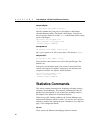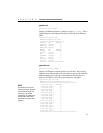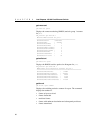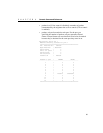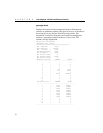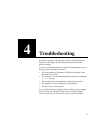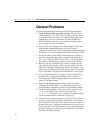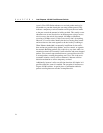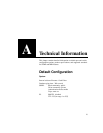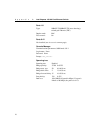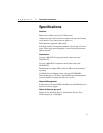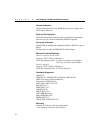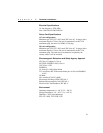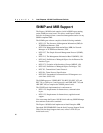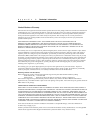
74
CHAPTER 4
Intel Express 10/100 Fast Ethernet Switch
A port’s Flow LED flashes whenever a received packet needs to be
forwarded to a port that already has too many packets queued. This
indicates a temporary overload situation on one port; the total traffic
to the port exceeds the amount its buffer can hold. This usually occurs
when there are several fast devices on different ports trying to access
a device across the switch (for example, 100 Mbps workstations
accessing a 10 Mbps server). If this occurs rarely, don’t do anything.
However, if it occurs often, identify the devices causing flow control
and move them to the same segment as the device they’re talking to.
When Ethernet bandwidth is temporarily insufficient for the traffic,
three actions are possible: drop packets, use flow control, or segment
the network. Buffering packets only works for a very short while. An
extended overload will eventually overflow buffers and cause dropped
packets. Flow control stops transmission on a port and forces devices
to resend packets, ensuring that packets aren’t lost. This is the most
reasonable solution, since it relies on Ethernet’s inherent collision
detection mechanism to relieve temporary overload.
Additionally, because it relies on collision detection, full duplex isn’t
possible when flow control is enabled. The exception is between two
Express 10/100 switches. A special piece of information added to
packets traveling between switches accomplishes this.



